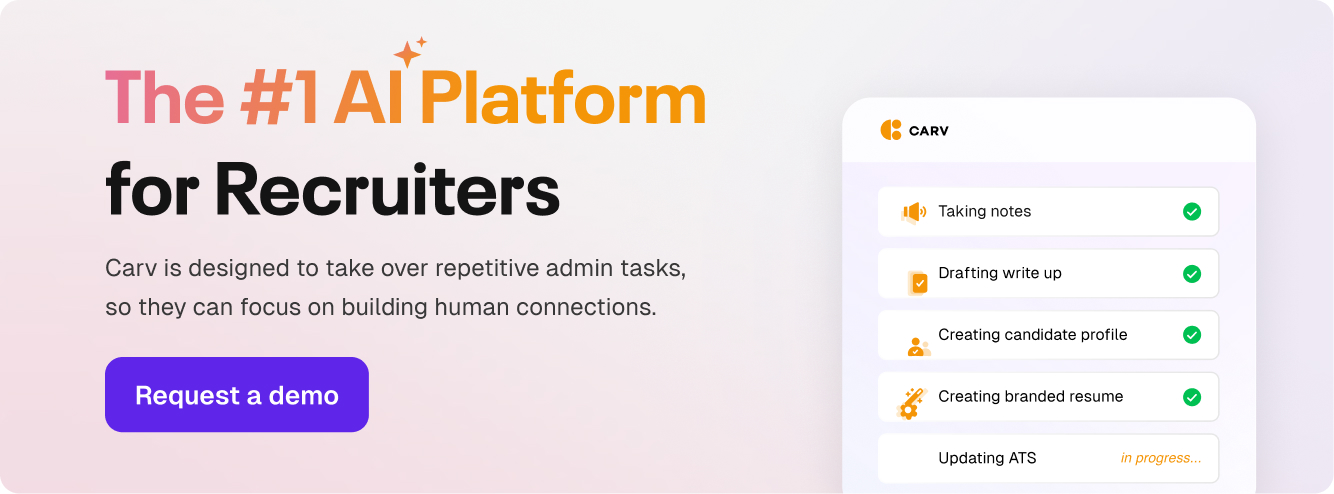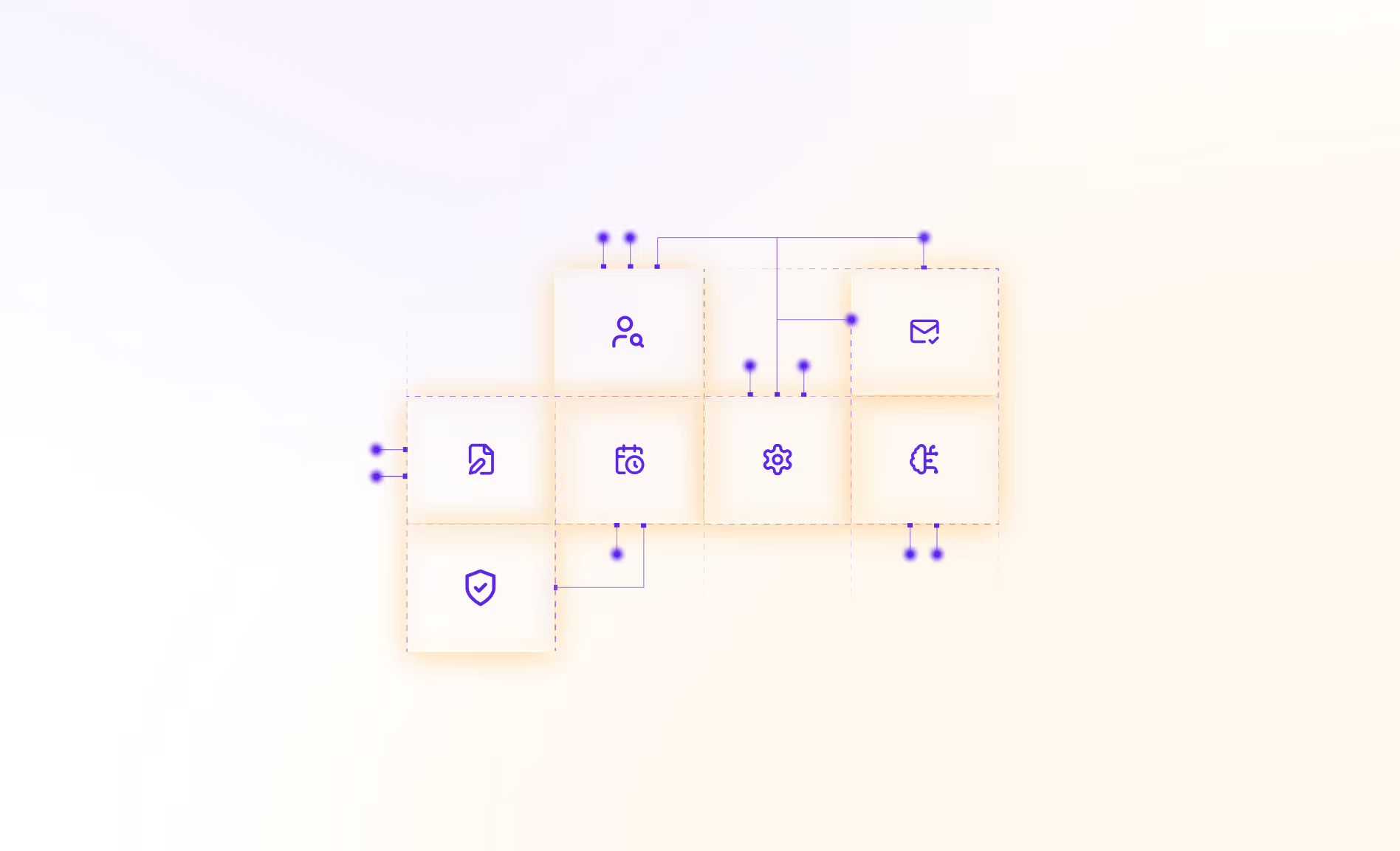It’s been said many times before, and after all these years it still holds truth: Modern recruitment is broken. Not because it doesn’t “work” for companies, but because it’s built around processes and tools, not around people.
In the current setup, the hiring process with its numerous steps can span several weeks, causing candidates to withdraw from the application process due to their time being disrespected.
However, recruiters’ performance is measured using hard metrics such as the time to process, fill rate, cost per hire, time to hire, and offer acceptance rate. The candidate satisfaction score is often disregarded, or - when taken into consideration - is seen as less important than all these process-focused metrics.
It therefore comes as no surprise that talent acquisition professionals often come across as more focused on filling positions than on evaluating a candidate’s fit for the role, and that 48% of candidates report going through negative hiring experiences in the past 12 months.
At surface level, this setup seems to work for companies. They manage to fill their roles, despite leaving many candidates feeling ignored and undervalued. But when we zoom in, we see that the talent acquisition process, although built around a company’s hiring needs, is actually failing in fulfilling these needs in an effective manner.
The time to fill has increased to 47.5 days, and with talent shortages at the highest they’ve been in 16 years, a staggering 75% of companies report having difficulties in effectively attracting top talent and sourcing the best candidates for a role.
So how did we get here?
Modern recruitment: Heavy admin and little time for candidates
Despite the wide adoption of new technology such as messaging chatbots and workflow automation tools within recruitment, the typical hiring process is still heavy in admin work.
Recruiting teams spend a good 20 to 30% of their time on administrative tasks, going through a sequence of pre-defined steps from identifying vacancy requirements and posting job openings to sourcing, screening, and interviewing candidates.

The data is then passed to the Applicant Tracking System, and the candidate profile is created before the hiring process can move to its final phase: The hiring decision.
Although the recruitment process is long and convoluted, this setup still works for companies, as their need is to find qualified candidates for the open roles - even if they’re not the best candidates on the market. And to do this, they need to have enough job applications in the pipeline and enough information about the job seekers so that hiring managers can make the final decision.
In this scenario, the focus of recruiters is more on hitting their numbers, than on building a relationship with the applicant or making the job seeker feel valued. So the spotlight is not taken by the candidate, but by the candidate profile, or the representation of the candidate in the ATS.
Over the years, many efforts have been made to solve these problems and technological innovations have definitely improved the overall candidate experience. But hiring is still heavy in admin work - to the point where recent studies found that 63% of recruitment process time is unnecessary.
So if all of this is known, why do recruiters spend so much time on admin?
A process built around the ATS, not the candidate
This has to do with the way that the recruitment process is structured, and with how most recruitment tech on the market is built.
Here’s a brief overview:
- First, you identify the vacancy and its requirements, then you determine the best candidate profile for the role, considering factors such as skills, experience, and cultural fit.
- Next, you create a job description based on the profile and publish it to job boards or social media platforms. You might also use referral channels and talent pools faster candidate sourcing.
- The next step is screening candidates for initial fit. You review resumes and applications, and conduct short interviews to asses the qualifications of potential candidates. Automated assessments might also be used.
- Then, you engage with the right candidates, scheduling interviews, providing feedback, and answering questions throughout the process.
- Once interviews are done, you shortlists the suitable candidates and select the top talent together with the hiring manager. In this step, unconscious bias can affect the quality of hire and hurt the retention rates.
- Finally, the selected candidates receive the job offers, and once accepted, new hires are handed over to the HR teams for onboarding.
For all these steps, the source of truth is the ATS, and the entire process revolves around the candidate data.
But the ATS is an applicant tracking system, not a candidate experience system.
And although a structured approach to recruitment and keeping track of candidates are absolutely necessary, if we look at all these process steps, the most time-consuming ones are the steps where there’s no contact with the candidate. These repetitive admin tasks add little value to the candidate experience, while taking most of a recruiter’s time.
.avif)
Some hiring teams have partially solved this issue through automation.
Steps like the candidate outreach, resume screening, reference checking, or interview scheduling can be fully streamline with “regular” recruitment technology, freeing up recruiters’ time. But in most companies, recruiters are still spending too much time on admin, and are still not as effective as they could be in their work.
The main culprit is the fact that a lot of the communication and follow-up steps are reliant on interview data, which is unstructured data. And this is why no technology, until now, has impacted recruitment in the way that AI-powered tools are about to.
Let’s dissect this a bit further, to understand why artificial intelligence has the potential to fundamentally reshape recruitment going forward.
Interviews: The unintentional blocker in the recruitment process
Interviews are the main source of data that drives the recruitment process, and these conversations are what we call “unstructured data”. Whether it’s your phone screen, your first interview, second interview, or the communication with hiring managers, all the talking that takes place during hiring is unstructured data, meaning that it doesn’t come in a predefined format like “parameter - value” pairs.
On top of this, the admin work in between interviews consists of taking in the unstructured data and giving it structure. Unlike resumes, which can be scanned and evaluated using machine learning algorithms, interviews can’t be deconstructed in the same manner.
Or not without the use of AI technology.
To become usable and by “understood” by other tools in the recruitment stack, all these conversations need to be turned into a structured data source by recruiters. For example, during interviews, recruiters take notes that are logged into the ATS, for hiring managers to have more context on a candidate’s profile. These notes are then used for debrief sessions with hiring managers and for candidate follow-up emails.

Because the interviews are the main piece of unstructured data in the entire process, they unintentionally become the biggest blocker in the way of a truly candidate-focused experience.
As said, translating unstructured data into structured information that can seamlessly flow between systems requires more than just automation technology.
This translation was, up until now, considered an inherently manual effort. Before generative AI, it was impossible to automatically structure this data. Yes, keyword-based “artificial intelligence” was a thing, and in some ways it worked, but it was flaky at best.
With AI recruitment software, we now have the technological capability to transform unstructured interview data into an accurate transcript, in real-time. This can be done automatically, by a generative AI engine - without any human intervention.

So what does this mean for Talent Acquisition teams? And what does AI-driven recruitment look like?
Reshaping recruitment with AI
Unlike their human counterparts, recruitment AI software is equipped with infinite memory, infinite learning ability, and infinite execution power.
They can tirelessly search through large talent pools, can “remember” every candidate interview and job requirement to automatically find the best fit, and can be contextually enriched to understand the nuances of the employer brand and company culture, so that they use the right tone when interacting with candidates or hiring managers.
Moreover, AI tools can be customized with the right checks and balances to maintain candidate privacy and compliance, can adapt to any language, and can be trained to understand technical jargon too.
These capabilities give them the incredible potential of taking over not just tasks, but entire hiring workflows, completing them without any human input, and opening the door to truly autonomous recruitment.
In other words, recruitment AI technology can go from owning a task such as information extraction or content creation, to owning the recruitment admin process, owning the talent pool to keep the candidate pipeline always full, owning the relationship with the candidate, and finally - owning the entire vacancy, from posting a job opening to shortlisting the best candidates and updating the information across systems.
It's the difference between incremental and fundamental innovation - a topic we've touched upon in the podcast episode below.
This new way of doing things that has the potential to eliminate all admin work from the hiring process and as a result, fully streamline recruitment operations, saving countless hours of a recruiter’s time. Hours that can be used to really focus on the candidate, and finally put an end to long drawn out processes and unsatisfying candidate experiences.
And that is the fundamental change that AI tools bring to the table.



.avif)



%20(1).avif)
.avif)